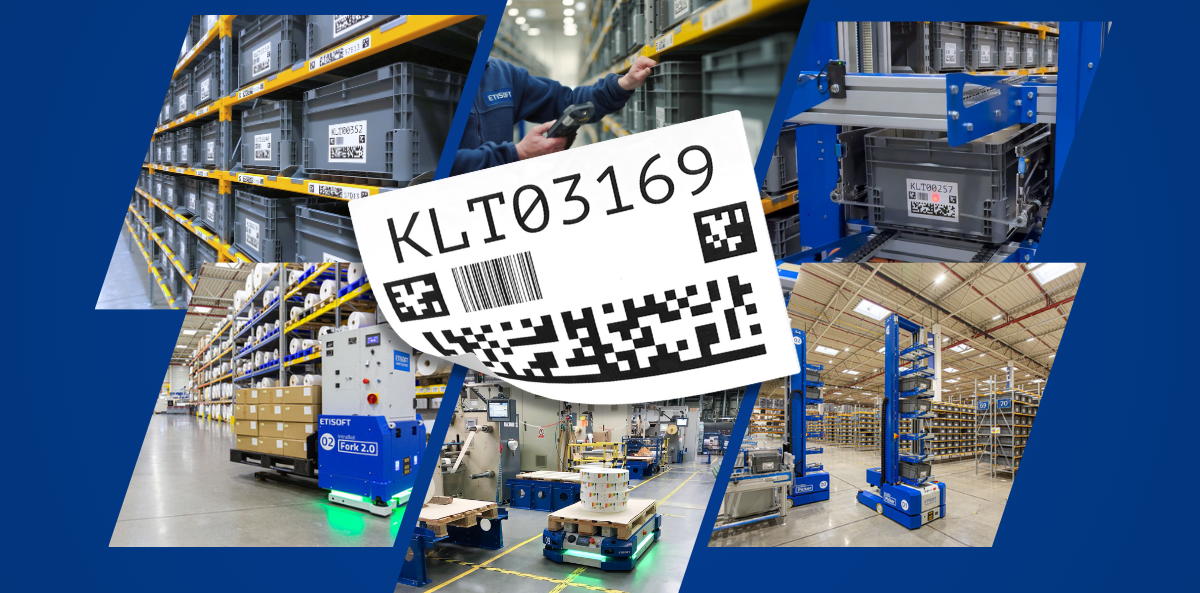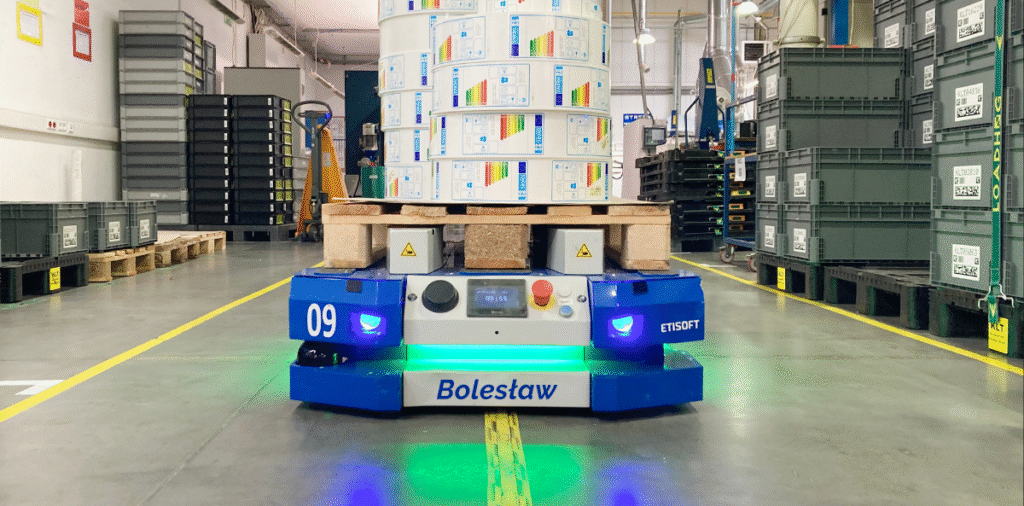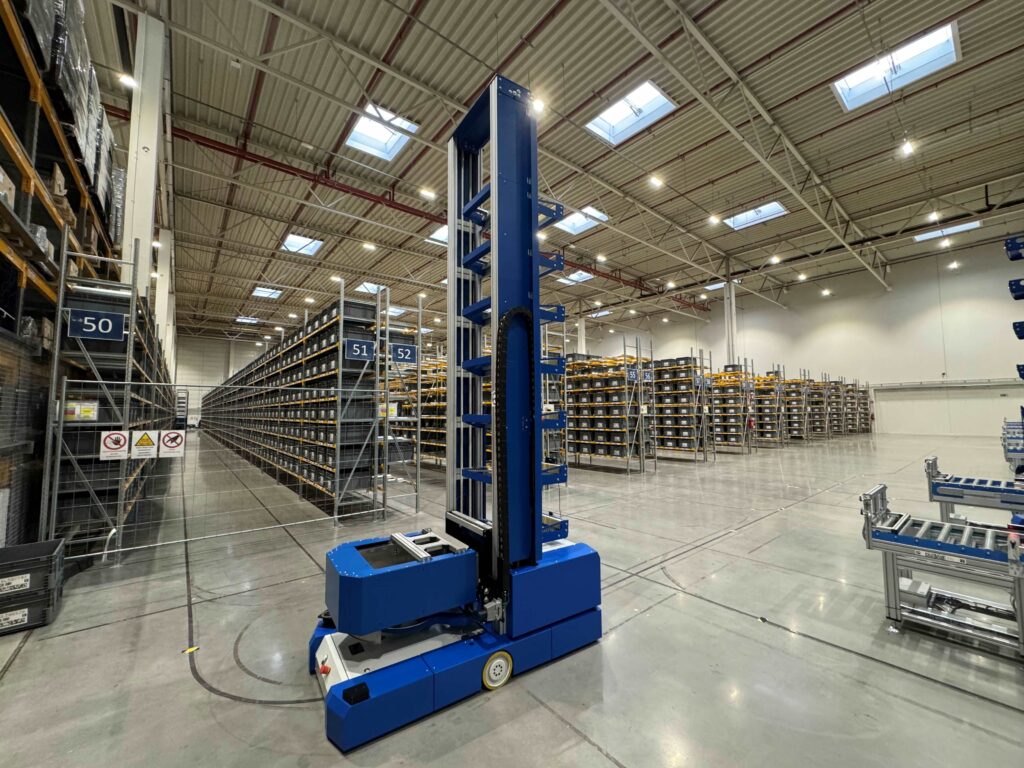
From labels to Industry 4.0: how mobile AGV robots work with labels in a smart warehouse

From labels to Industry 4.0 – isn’t Etisoft’s range of products too broad? “From labels to Industry 4.0” is not just a slogan, but our vision – showing how a seemingly simple information carrier can give rise to an entire ecosystem of intelligent solutions supporting logistics, production, and process automation. So, if we look at a label as an information carrier, things start to get interesting. The mobile AGV robots we manufacture at Intrabot Robotics show that even a simple label can become part of advanced process automation – this article tells you more about it.
Let’s start with the trucks themselves – a range of information is contained on the labels used in their production, from cable markings, pictograms, schematic diagrams, and rating data. AGV is a product and requires specific markings in order to be put into service.
But labels are also a carrier of information for the truck itself, enabling it to carry out its assigned missions.
Triggering missions by mobile AGV robots – example 1
In the process of delivering components to the production line, AGVs collect pallets from the buffer and transport them to the production machines. The pallets are marked with a barcode label, which is read when the pallet arrives at the pickup point at the warehouse output buffer. Thanks to this reading, the robot mission control system knows where to deliver this specific load. A mission is generated for the AGV, which transports the load to the designated location.
2D labels as support for mobile AGV robots – example 2
Logistics trolleys used to transport components between successive production operations are permanently marked with a 2D code label. The robot mission management system – Intrafleet – receives an order to transport a specific trolley to the next operation. Thanks to the permanent marking of each trolley, the system can confirm that the mission was performed on the specific trolley indicated by Intrafleet – the robot verifies this by reading the label and picking up the correct trolley using its vision system.
Labels and mobile AGV robots in the Etisoft smart warehouse. Discover the SALMA system – example 3

We have used an advanced verification system based on labeling in the SALMA system. The Logistics, Warehousing, and Notification Automation System implemented at Etisoft is based on 10 Intrabot Picker AGVs and a Kuka robotic arm that performs the depalletizing process.
Our finished goods warehouse consists of 14,500 KLT containers arranged on shelves. Each container is equipped with two identical labels that uniquely identify it through an individual container number encoded in a barcode. This identification is useful already in the process of receiving containers into the warehouse. Containers on pallets arrive from production and go to the depalletizer. The vision system recognizes the arrangement of containers on the pallet, and the barcodes read from the labels inform the ERP system which containers have been accepted into the warehouse.
Subsequent labels appear as markings for each location on the shelf. When the Intrabot Picker places the KLT container on the shelf, it reads the location number and returns information to the ERP about the allocation of a specific container to a specific shelf.
Automated or traditional warehouse – which one to choose?
Thanks to this allocation, robots can also pick containers from shelves and deliver them to packing stations. Data on the locations of the required containers is transferred from ERP to the SALMA system, which then assigns specific tasks to the robots.
Precise location in the warehouse thanks to 2D labels and AGV mobile cart systems – example 4
Also connected to the SALMA system. The labels marking the shelves in the warehouse serve an additional purpose. Special 2D codes printed on each label serve as locators, reference points read each time by the robot’s vision system. Analysis of the scanned image helps the robot to precisely locate its position to enable precise placement or removal of the container.
The examples described above show the role of the label as an information carrier that can perfectly support the automation of logistics tasks both in production and in the warehouse.
If you are planning to automate your intralogistics processes, please contact us! Visit our warehouse and see our processes in action!
